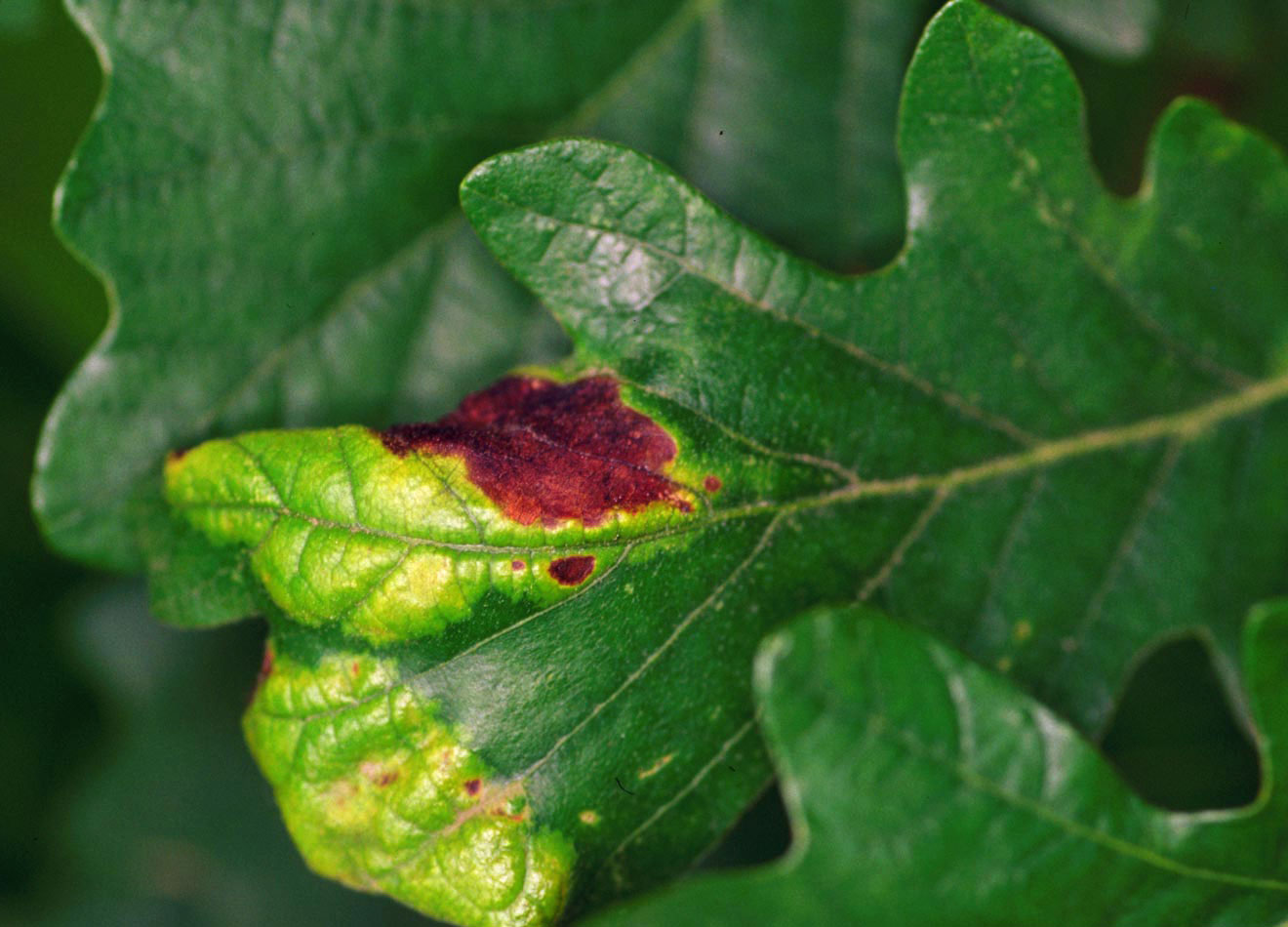
Oak leaf blister (Taphrina leaf curl)
Taphrina spp.
Also Known As - Taphrina leaf curl (Oak leaf blister)What is Oak leaf blister (Taphrina caerulescens)?
Oak leaf blister or Taphrina leaf curl caused by the fungus Taphrina caerulescens is a common disease affecting many species of oaks. It is primarily distributed in regions with cool and wet springs. Infected plants include various oak species, with the red oak group being particularly susceptible. The disease manifests as yellow, blister-like circular raised areas, 1/16 to 1/2 inch in diameter, on the upper leaf surface. As the blisters age, they turn reddish-brown and may cause leaf curling. While it doesn't harm the overall health of the tree, severe infections can mar its appearance.
How does an Oak leaf blister (Taphrina caerulescens) occur?
Taphrina leaf curl is reproduced through the production of microscopic ascospores by the fungus Taphrina caerulescens. These spores are formed on the upper epidermis of infected leaves during midsummer. They are then expelled and can cover the surfaces of the blisters, giving them a powdery appearance. Some of these ascospores are carried by wind and rain to the buds of oak trees, where they overwinter. In the following spring, the spores germinate and cause new infections, continuing the disease cycle.
Symptoms
1 - Effects on Trees
• Oak leaf blister primarily affects the appearance of infected trees. severe infections can cause leaf deformities, such as blisters, curling, and discoloration. • Generally, it does not pose a significant threat to the overall health of the tree. Infected trees may experience reduced vigor and aesthetic value.
2 - Effects on Soil
• Fallen infected leaves contribute to organic matter decomposition and nutrient cycling in the soil. This can indirectly benefit soil health by enriching its organic content. • Infected areas may experience changes in the local landscape and aesthetic appeal.
Solutions
1 - Prevention
• Maintain tree vigor through proper cultural care, including watering, fertilization, and pruning. • Promote good air circulation by pruning and thinning branches to reduce humidity around the tree. • Clean up fallen infected leaves to prevent the spread of spores. • Avoid overhead watering, as wet foliage creates favorable conditions for fungal growth. • Choose oak tree varieties that are less susceptible to Oak Leaf Blister, such as white oaks. • Apply balanced fertilizers according to the tree's requirements to promote strong growth.
2 - Treatment
• Some fungicides registered for managing oak leaf blister include: • Chlorothalonil-based products like Ortho Max Garden Disease Control Concentrate and Bonide Fungonil Multipurpose Fungicide Concentrate. • Copper-based products like Bordeaux mixture or copper hydroxide formulations. • Please note that specific product availability and recommendations may vary based on location and regulations.
